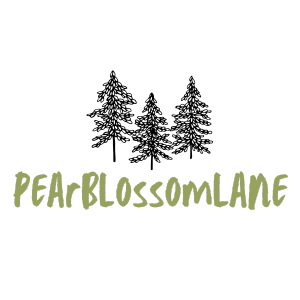In a world that seems to be on a caffeine-fueled treadmill, the slow living movement offers a refreshing escape. It’s like hitting the pause button on life’s chaotic playlist and opting for a soothing melody instead. Imagine savoring your morning coffee without the pressure of a ticking clock or taking leisurely strolls that let you actually notice the flowers—yes, the ones you’ve been zooming past in your car!
Slow Living Movement
The slow living movement promotes a lifestyle rooted in mindfulness and intentionality. This movement encourages individuals to detach from the relentless pace of modern life. Advocates seek to prioritize experiences over material possessions.
People engage with their surroundings more deeply when they embrace slow living. It emphasizes savoring moments instead of rushing through them. Activities like enjoying meals at a leisurely pace or practicing mindfulness can transform daily routines.
Various aspects define this movement, including sustainability and minimalism. These principles foster a deeper connection to the environment and encourage conscious consumption. Engaging with the community and supporting local businesses enriches the slow living experience.
Practitioners often find joy in simple activities. Gardening, crafting, and cooking from scratch foster creativity and satisfaction. They help individuals develop a greater appreciation for process over product.
Mindfulness plays a crucial role in slow living. Practicing mindfulness allows for greater awareness of thoughts and feelings, leading to reduced stress levels. Individuals report improved mental health as they develop healthier relationships with their time and environment.
The movement’s impact extends beyond personal satisfaction. Society as a whole benefits when people adopt a slower pace. Slower living fosters stronger community ties and reduces the pressure of consumeristic habits.
Overall, the slow living movement offers a profound shift in perspective. Embracing this lifestyle cultivates gratitude and enhances overall well-being. Individuals often return to a simpler, more meaningful way of living.
Principles of Slow Living

Slow living focuses on intentionality and mindfulness, emphasizing a deeper connection to life’s simple pleasures. Key principles guide this movement toward a more fulfilling lifestyle.
Mindfulness and Presence
Mindfulness encourages individuals to engage fully in the present moment. Detaching from distractions allows for a richer experience in daily activities. Practitioners learn to appreciate small moments, enhancing emotional well-being and reducing stress. Awareness of thoughts and feelings fosters clarity, promoting better decision-making and satisfaction. Daily practices like meditation and deep breathing cultivate this sense of presence.
Sustainability and Environmental Impact
Sustainability plays a crucial role in slow living, emphasizing conscious choices that benefit the planet. Choosing local, seasonal foods reduces carbon footprints and supports communities. Recycling and minimizing waste create a deeper connection to the environment. Additionally, prioritizing quality over quantity leads to less consumption and more mindful living. Engaging in sustainable practices nurtures both individual and community health, allowing for a more harmonious relationship with nature.
Benefits of Embracing Slow Living
Embracing slow living offers numerous benefits that enhance overall well-being and foster deeper connections.
Improved Mental Health
Engaging in slow living practices fosters better mental health. A mindful approach reduces stress levels significantly. Individuals who prioritize moments of stillness and reflection often experience lower anxiety. Research indicates that spending time in nature improves mood by increasing feelings of happiness and relaxation. Practicing gratitude becomes more manageable, leading to elevated emotional resilience. Simple activities, like journaling or meditating, help people sharpen their focus and slow down racing thoughts. Consequently, a conscious lifestyle nurtures a stronger sense of inner peace and balance.
Strengthened Relationships
Cultivating relationships matters in the context of slow living. The emphasis on meaningful connections leads to stronger bonds with family and friends. Engaging in shared activities, such as cooking meals together, creates lasting memories. The ability to listen actively and be present elevates the quality of conversations. Research shows that quality time spent with loved ones enhances satisfaction in relationships. Regularly disconnecting from digital devices allows individuals to deepen their emotional connections. A slower pace of life encourages appreciation for others, leading to increased support and understanding within communities.
How to Incorporate Slow Living into Daily Life
Incorporating slow living into daily life involves simple yet effective changes that promote mindfulness and intentionality. Engaging in small, everyday practices can significantly enhance one’s experience of life.
Practical Tips and Strategies
Choose to start mornings with a mindful breakfast, focusing on savoring each bite. Prioritize small activities like reading a book or journaling, allowing time for reflection. Allocate time outdoors for leisurely walks, fostering a deeper connection with nature. Limit screen time to reduce distractions, enhancing engagement with surroundings and loved ones. Adopt a routine that emphasizes quality over quantity, turning daily tasks into meaningful experiences.
Creating a Slow Living Space
Transform living spaces by decluttering to create a sense of calm. Incorporate natural elements such as plants, which promote tranquility. Designate areas for slow activities, such as reading nooks or crafting corners, enhancing focus and creativity. Utilize soft lighting to create a peaceful ambiance, encouraging relaxation and mindfulness. Prioritize a clutter-free environment that reflects personal values, promoting a greater sense of well-being and intentionality.
Challenges and Criticisms of Slow Living
Slow living faces several challenges and criticisms despite its growing popularity. Critics often point out that the movement can seem elitist, as those with limited resources may find it difficult to prioritize slow practices. Embracing sustainable habits and artisanal goods can come with higher costs, making it less accessible for all individuals.
Individuals may also struggle with guilt. Many find it hard to unwind and practice mindfulness in a society that praises productivity and constant activity. The pressure to achieve can conflict with the very essence of slow living, leading to feelings of inadequacy among practitioners.
Another criticism involves the misconception that slow living equates to stagnation. Some believe that slowing down hinders personal and professional growth, fearing the loss of competitive edge. This misconception can discourage individuals from fully exploring the benefits of a mindful lifestyle.
Maintaining boundaries can pose a challenge for those seeking balance. As people engage more deeply with slow living, they might find it difficult to resist the pull of fast-paced modern life. Distractions from technology and societal expectations can undermine efforts to foster intentionality.
Lastly, slow living can induce anxiety for some. Practitioners may feel overwhelmed by trying to simplify their lives. Striving for conscious consumption can become burdensome, leading to stress about making the “right” choices.
Navigating these challenges requires patience and commitment. Adopting a slow living lifestyle means acknowledging obstacles while remaining focused on the pursuit of mindfulness and connection.
Adopting Slow Living
The slow living movement invites individuals to reclaim their time and prioritize what truly matters. By embracing mindfulness and intentionality, people can cultivate deeper connections with themselves and their surroundings. This lifestyle shift not only enhances personal well-being but also fosters community ties and promotes sustainable practices.
While challenges exist in adopting slow living, the journey toward a more meaningful existence is rewarding. Simple changes can lead to profound transformations, allowing individuals to savor life’s moments. Ultimately, slow living serves as a powerful reminder that life’s richness lies not in speed but in the quality of experiences.




